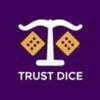I just finished reading your most recent column. You mentioned that it’s best for a player to play at a casino with liberal rules, but the number one thing you failed to mention to your readers is to play at tables that pay 3-2 on a blackjack, and not to play any table that pays 6-5 or less. I think it’s really important for you to convey this message to your audience to STAY AWAY from those RIP-OFF blackjack tables that pay 6-5. Jeffrey N.
I’ve adverted to, admonished, averred, attacked, antagonized, and all-but-wept about the pitfalls of getting paid 6:5 for a blackjack multiple times, but perhaps you’re right, Jeffrey, some more ‘splainin’ about that rotten rule change is warranted.
On a conventional blackjack game, a blackjack typically pays 3:2. Say you bet $10 and get a natural, you’d be paid $15. However, these new 6:5 games pay only $12 for a $10 wager. Tweaking this one rule dramatically increases the house advantage—big time!
Without the 6 to 5 rule, the house edge is typically a half of one percent against a basic strategy player. Add a 6-5 rule on blackjacks and the cost to a smart player zooms an extra 1.39%.
So in dollars and cents, what’s the difference between the two? For a $10 player using perfect basic strategy at 60 hands per hour, the expected loss is $3 per hour. The expected loss for the same player on a 6:5 game is an additional $8.35. Oh, and once all casinos start to utilize the 6:5 rule for a blackjack, all bets are off as to ever seeing a blackjack paying 3:2 again. It will be tough noogies for all.
‘Caveat emptor’ – ‘let the buyer beware,’ Jeffrey’s question advises. He’s right. Don’t waste your hard-earned money on any blackjack game that pays less than 3:2 for a blackjack. You’re buying a pig in a poke with a pretty pink ribbon attached if you do …well, not all that pretty.
My friend, Ed, will never, ever, split aces, especially against a dealer ace. What is the best strategy? Rick G.
What’s important here, Rick, is to determine when to take advantage of the splitting rule. Even against a dealer Ace, splitting a pair of aces is a no-brainer in that without splitting them, all you have is a two or soft 12.
So being that there are more 10-value cards than any other card in the deck, why then, would anybody not split a pair of Aces?
I’m guessing your friend might be somewhat hot and bothered by the fact that a split ace and a 10 counts as an ordinary 21, paying 1:1, and not as a blackjack, which pays 3:2. He may feel cheated by that, and decide, in view of the limitation, not to bother splitting them.
Then there is the rule that says a split ace may receive only one additional card. There are blackjack players who believe that this rule limits their opportunity for additional cards, so they, too, refrain from splitting.
The bottom line is that if you put all emotions aside and focus solely on the blackjack odds and probabilities, you are better off with a hand of 11 than a hand of 12. Splitting aces gives you two hands of 11, and the correct blackjack strategy is, therefore, always to split them.
Gambling Wisdom of the Week: “A poker player is like a teabag. You don’t know what they’re made of until you put them in hot water.” –VP Pappy




















